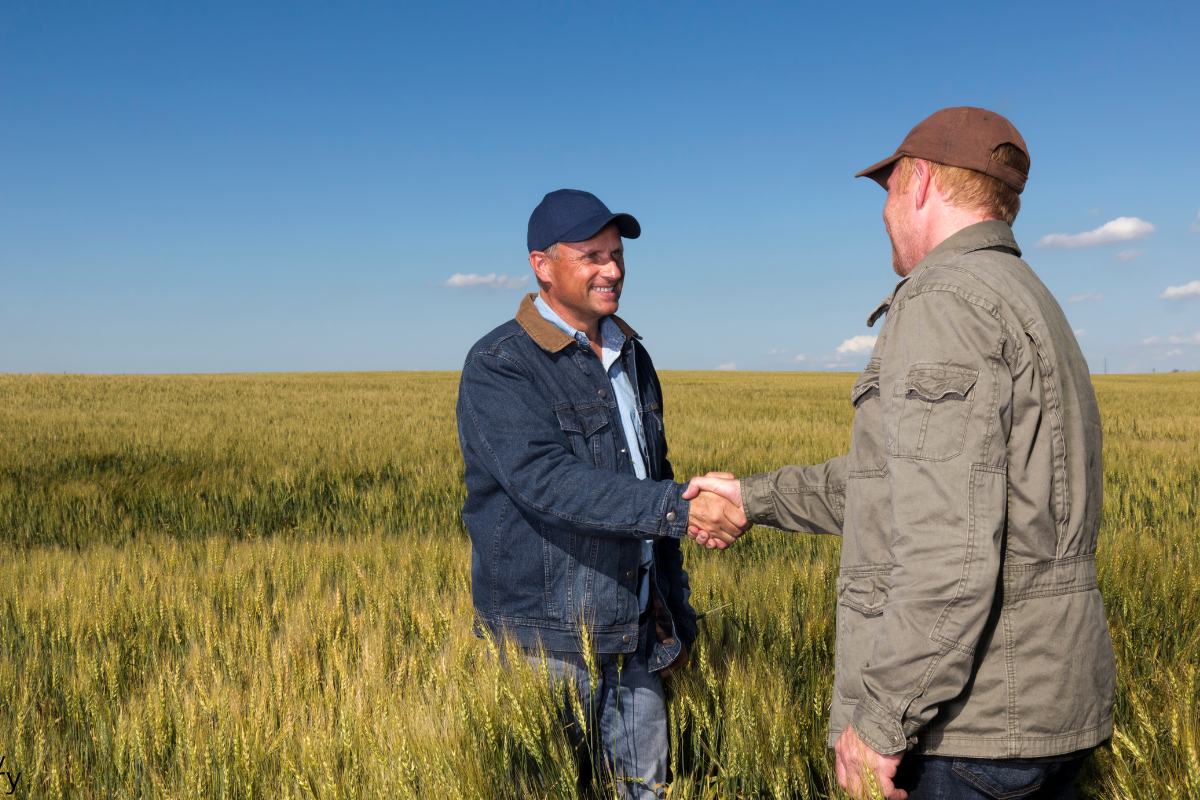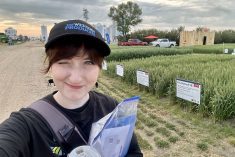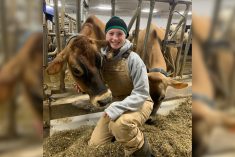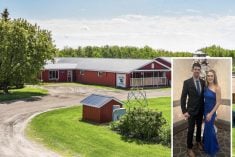Farmers raising livestock and growing crops in developing countries often lack access to modern equipment and the capital needed to make improvements on their farms. They face other hurdles too. Without computers or the internet, it’s impossible to watch YouTube videos for step-by-step instructions to repair equipment or to learn new farming techniques, and there is no online shopping for inputs, parts or other supplies.
Despite the challenges, though, farmers are a resilient breed wherever they farm. So if these developing-country farmers could just connect with developed-world farmers and tap into what those farmers have learned, they could leapfrog ahead into the 21st century.
But how is that ever supposed to happen?
Read Also

Are you ready for farm succession?
What motivates some farmers to make a succession plan while others don’t seem worried.
Well, it is happening, largely because of groups that work with partner organizations abroad to provide funding, infrastructure, information and volunteers. These groups know Canadian farmers have skills that could help farmers in countries like Eswatini, Kenya, South Africa, Cuba, Ecuador, Haiti and elsewhere better manage their crops and animals to increase production and the quality of life in their communities. And now, civic groups, non-profit organizations and agricultural associations are co-ordinating overseas trips for them.
While there is no data about the number of farmers who donate their time to worthwhile causes, the latest report from Statistics Canada shows that 79 per cent of Canadians volunteer and donate an average of 206 hours of their time per year (with an average of 69 hours devoted to international organizations).
But then, it’s not just international volunteerism that has an impact. Canadian farmers are also generous with their time at home, teaching school children where their food comes from, mentoring young farmers, and helping new Canadians establish farms. Their dedication ensures that agricultural knowledge and skills are passed down from generation to generation, across cultures, throughout Canada and around the world.
So let’s meet some Canadian farmers who are using their knowledge and skills to give back.
The bigger picture
In 2019, Cheryl and Marc Norleen joined the National Young Farmer program through Egg Farmers of Canada. Another member had told them about Project Canaan, an effort through the non-profit group Heart for Africa that includes a farming project aimed at providing jobs and addressing hunger in Eswatini, formerly Swaziland, in Africa.
Egg Farmers of Canada has been partnering with the non-profit since 2014, providing funding, materials and expertise to help construct two barns that house 3,750 Hy-line Brown laying hens. Each year, the association sends a group of egg farmers to Eswatini to help with routine maintenance projects.
“(Previous volunteers) said it was life-changing so we thought we should check it out for ourselves,” Cheryl recalls.
The Norleens spent a week in Africa in 2019. They knew the laying hen operation would be different from their farm in Raymore, Sask. In fact, seeing different management styles and understanding the challenges farmers faced in other parts of the world was one of the reasons Marc wanted to volunteer with Project Canaan.
“Seeing other operations and different management styles is interesting … they definitely have different challenges than we do with our layers in Canada,” Marc says. The solutions have to be different too, because of a different technology mix.
“Here, we have computers running our barn and we have technicians (who) can come and fix it or we can go online but they are in the middle of nowhere. If something went down … they are a week to two weeks away from getting it fixed.”
The hens live in A-frame cages in an open pole shed; workers push carts down the aisle to gather eggs. Refrigeration is rare in the village so all of the eggs are boiled on-site and distributed to the local community through a network of churches and food pantries.
The Norleens helped with general facility maintenance. In addition to cleaning the barns, changing water nipples and cleaning filters on the egg boilers, the couple helped build a manure storage pit so chicken waste, which is hauled out of the barn in wheelbarrows, could be composted away at a distance to reduce the number of flies in the barn. The group also helped maintain farm equipment.
“We were able to provide a hands-on service and know that it was making an impact,” Cheryl says.
“They can do general labour but don’t have skilled labour,” she says. “They know how to run the equipment but not how to maintain it.”
It was a lot of hard work but a worthwhile effort. For Cheryl, seeing how egg farmers on the other side of the world managed operations and watching children show such appreciation for an egg did in fact live up to the promise. It has proved life-changing.
“These kids stood in line for hours just to get an egg and an orange,” Cheryl recalls. “Food is such a shortage and they knew that was going to be their meal for the day, they were just ecstatic … It made me so much more grateful for all that we have.”
Farmers helping farmers
Ken Mellish made his first trip to Kenya in 2002, and he has returned almost every year for the past two decades as part of Farmers Helping Farmers, a grassroots non-governmental organization based in Prince Edward Island that works with partners in Kenya and Canada to support projects in local villages.
On each overseas trip, the retired dairy farmer from New Perth, P.E.I., works with a team of volunteers to help Kenyan farmers access resources and improve farming practices.
Since Farmers Helping Farmers was established in 1979, volunteers have installed cisterns to provide water in the villages, helped install drip irrigation for smallholder farmers, built cookhouses at local schools, and established vertical gardens (in grow bags) to help families grow more fresh food in a small space.

The work often happens incrementally.
“We have to look around and say, ‘What’s the easiest thing to fix?’ and try to fix that and then go back and fix the next easiest thing,” Mellish says.
Farmers Helping Farmers also has an active dairy project. The dairy farms in Kenya are similar to Canadian dairies in the 1980s. The goal isn’t to train Kenyan farmers to run modern dairy operations but to use the resources they have to improve practices and production.
“Milk production goes up and down depending on what feed is available at the time,” Mellish explains. “We can’t bring what we know from someone that’s milking 100 cows to someone that’s milking two cows and doesn’t have access to feed supplies.”
As part of a team of experienced farmer volunteers, Mellish has helped dairy farmers improve feed and silage quality and storage practices. All of their advice is based on extensive conversations with farmers and tours of local dairy farms. On one tour, he noticed that the farmer had a cow that looked worn down but he was getting more milk than most other farmers in the area. The reason: He had a small patch of alfalfa for her feed.
“I asked him why more people weren’t growing alfalfa,” Mellish recalls. “He told us they couldn’t get good seed.”
Talking to the farmers and touring the fields allowed Mellish to identify two issues. The seed was fine but the farmers weren’t preparing their seed beds finely enough and the dairy farmers lacked seeders to sow alfalfa seeds. Farmers Helping Farmers donated seeders and farmers put the new knowledge into practice, and the results came as expected. Feeding their cows a steady diet of alfalfa, which grows all year in Kenya, helped the cows provide up to three times more milk.
“That, to me, is the way it should work,” Mellish says. “We went, we helped them solve a problem, but they do all of the work.”
The farmers have been incredibly receptive to the advice, says Mellish, and the volunteers benefit, too.
“When you go to the community and work with them, you get to know people,” he says. “We don’t bring back any (new technical skills) but we do bring back the positivity and resilience.”
Closer to home
Bill Zylmans knows a lot about potatoes. He’s been growing seed potatoes on W&A Farms in Richmond and Delta, B.C., for decades but realized that even though most kids love potatoes and French fries, few have any idea where their favourite foods come from.
In 2006, Zylmans jumped at the chance to volunteer with BC Agriculture in the Classroom (BCAITC) Foundation, a nonprofit that works with farmers, teachers and agriculture specialists to teach students about food and farming in the province. BCAITC is offered to more than 500,000 students through 90 per cent of public and First Nations schools across British Columbia, and it involves 526 volunteer farmers.
“The general population is not that interested in farming,” Zylmans says. “It’s great to bring children back to agriculture because a lot of younger people have no connection to agriculture; we’re too many generations removed from the farm.”

Zylmans introduced a Spuds in Tubs program through BCAITC. The initiative provided the materials, including donated seed potatoes from W&A Farms, and instructions for teachers to grow and harvest potatoes in their classrooms.
“It’s really taken off,” he says. “I never dreamt it would be such a success.”
Before long, Zylmans was visiting classrooms to talk to students in grades two through four about growing potatoes and he watched their eyes light up when he shared information about farming and answered countless questions about getting food from farm to table.
Zylmans has even even dressed up in full Western attire — a cowboy hat, belt buckle and boots — to attend harvest days when students, who have been tending to colorful plastic tubs filled with early seed potatoes for 75 days, dig into the dirt to pull out mature potatoes and turn them into a potato salad feast.
“Farming is all about seeing the fruits of your labour,” Zylmans explains. “Seeing them (the students) get to experience that is such a kick.”
It’s not just the students who learn about agriculture through BCAITC. Zylmans has also led farm tours for teachers, traveling to different farms throughout the Fraser Valley to explain different crops, irrigation methods and answer questions about farming as part of a summer credit course offered through the nonprofit organization. Educators loved the opportunity to visit farms and take their new knowledge back to the classroom.
While his biggest goal is to give back to local communities, Zylmans also acknowledges that talking to students about agriculture could have some positive benefits.
“I thrive on the connection and interaction and seeing the enthusiasm from the young people doing a little something related to agriculture. It feels like you’re really providing something important to them and they’re really absorbing it,” Zylmans says. “It’s another way of giving back and maybe it’ll help entice one or two [students] to go into agriculture.”
Four questions to help you find the right volunteer opportunity
There are many great reasons to volunteer, from creating new connections and building your skills to giving back to the community. With countless opportunities available, it can be hard to know how to find the right fit. Asking these four questions can help:
Why do I want to volunteer? Younger volunteers often want to build their networks while giving back while older volunteers want to share their skills, according to Alison Stevens, volunteer engagement specialist at Volunteer Canada.
For those looking for networking opportunities or a community connection, group activities like assembling food boxes at a food pantry or planting trees with a local conservation group might be the right fit. Teaching classes or serving on a non-profit board are ideal ways to share your skills while making a difference in your community.
How much time do I have to give? Some volunteer opportunities like handing out water at charity runs are one-and-done while others, including delivering hot meals to older adults or tutoring at-risk students often require a regular schedule.
“Starting out with a one-time volunteer opportunity is a great way to introduce yourself to an organization and see if it’s a good fit,” Stevens says.
Decide whether volunteering occasionally or making a long-term commitment is a better fit for your lifestyle. Ask organizations whether they have opportunities that offer flexible scheduling to accommodate long days on the combine during harvest season or late nights in the barn during calving.
Is there a cause I really care about? Consider narrowing down volunteer opportunities to the types of organizations you want to help. Stevens notes that charities ranging from hospitals and schools to animal shelters and food banks all welcome volunteer contributions.
Where are opportunities available? You can find volunteer opportunities around the corner and across the globe. Volunteer Canada operates 150 volunteer centres across Canada, partnering with community groups to post calls for volunteers and help those who want to give back find the right fit.
National and provincial professional associations like Egg Farmers of Canada, Canadian Foodgrains Bank and the Agricultural Producers Association of Saskatchewan all facilitate volunteer opportunities for their members.
In addition to online searches, tap into churches, synagogues and mosques, community groups and local networks to learn about organizations looking for volunteers. There are even ways to give back for those living in the most remote locations.
“Virtual volunteering — sewing masks, writing cards, talking on the phone — have existed for a long time but these opportunities exploded during the pandemic,” Stevens says.
Before signing on to volunteer, Stevens suggests doing a little due diligence: Ensure that it’s an actual non-profit organization recruiting volunteers, not a business looking for free labour and spend some time on their website to ensure their values align with your own.
Stevens believes, “The more homework you do upfront, the better it’ll go.”
















